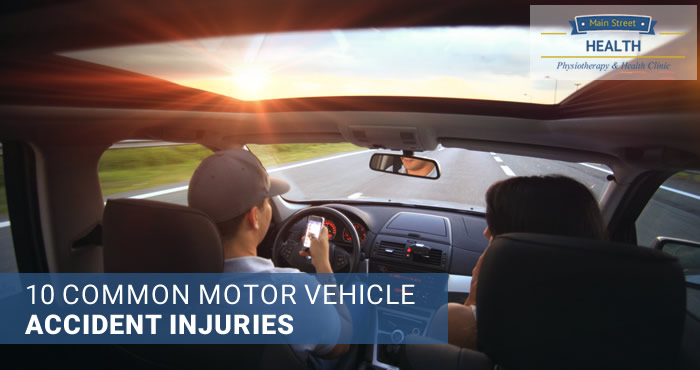Whether it’s a clear, sunny day or a blustery, bone-chilling night, a motor vehicle accident (MVA) can happen in an instant and change your life. The odds are that you or someone close to you will be involved in a serious MVA at some point in your life. Understanding the common injuries that can occur, the treatment options available, and the best place to get help will set you on a path to faster recovery.
This overview of the top 10 most common motor vehicle accident injuries is meant as an informational guide ONLY. Every situation in unique and specific diagnosis and treatment methods should be obtained from a health care professional.
1. Neck Injuries
One of the most common neck injuries in car accidents is whiplash. Caused by the sudden forward and backward movement of the head and neck, especially when involved in a rear-end collision, whiplash injuries damage the neck muscle and ligaments. You may experience symptoms like pain and stiffness in the neck, shoulder, lower back, hand or arm. Dizziness, blurred vision, irritability, ringing in the ears, and sleeplessness are also common complaints from this injury.
It’s also possible to experience generalized neck and head pain after a car accident and even temporary vocal cord paralysis.
Common Neck Injury Questions
Do I really have to see a doctor for a little neck stiffness?
It’s critical that you seek a proper diagnosis for any neck pain after an MVA. Damage to the nerve tissue and ligaments is generally caused from misalignment. Without proper treatment, pain medications and muscle relaxants can camouflage the problem and may lead to a lifetime of debilitating pain and development of arthritis.
If I have whiplash, will I have to wear one of those collars?
While commonly used to immobilize the neck after a whiplash injury, soft foam cervical collars are now recommended only for short time periods while experiencing pain. A collar may also help you sleep at night. New studies suggest that extended use can decrease muscle strength and slow recovery.
Neck and head pain after a car accident will be treated initially with ice to reduce inflammation, then moist heat plus painkillers and muscle relaxers. Massage therapy, stretching exercises, physiotherapy, and chiropractic care are all proven methods for regaining long-term strength and mobility.
2. Back Injuries
The most common area reported is a lower back injury from a car accident. You may experience anything from minor sprains and strains to more serious herniated discs and fractured vertebrae. Whiplash in the lower back (lumbar vertebrae) has also been identified in car accident claims. Any of these injuries may present immediately or may take several days after the accident to appear. Symptoms include numbness or tingling, arm and leg pain, and muscle weakness. This can be quite painful and impact your ability to perform normal activities.
The upper back or thoracic spine injuries are very serious. This portion of the spine connects to the ribs and chest area. These are among the common high-velocity injuries that may be sustained in a car accident. Because of the trauma experienced in this type of accident, it’s important to have it assessed by a healthcare professional right away to minimize nerve damage.
Common Back Injury Questions
What kind of treatment is needed to reduce lower back pain from a car accident?
Mild, soft tissue injuries of the lower back are generally treated with over-the-counter pain medications such as ibuprofen or stronger narcotic pain relievers for more severe pain. Sprains, strains, minor tears of ligaments, tendons and muscles generally require bed rest and physiotherapy, chiropractic care and massages for approximately 6 weeks.
Will surgery be required to repair a lumbar herniated disc?
Your doctor will typically recommend 4-6 weeks of nonsurgical treatments for relief of pain from a herniated disc. These include medications and therapies that will allow reabsorption of the disc herniation. If the pain persists, chiropractic manipulation or physiotherapy may be necessary to help you return to normal function. As a last resort option, lumbar decompression surgery to remove the herniated portion of the disc may be recommended to give the root more space to heal.
3. Spinal Cord Injuries
The most serious MVA injuries usually involve the spinal cord. Minimal damage may include bruising or excessive pressure, while more permanent impairment can occur with a severed spinal cord and/or nerves. Many times the outcome of these injuries is total or partial paralysis, loss of feeling or reflexes. If you’ve experienced any type of spinal cord injury, you could also be at risk for additional problems such as infection, blood clots, pneumonia, bleeding, and spinal fluid leaks.
Common Spinal Cord Injury Questions
What type of treatment is best after an accident to reduce spinal cord injuries?
First responders, after assessing the situation, will often immobilize the spine with a stiff neck collar and transport the patient on a back board. During this process there is constant monitoring of blood pressure, clear airway and other vital signs to minimize shock and prevent further damage.
Can paralysis from a spinal cord injury be reversed?
There have been a number of rehabilitation and experimental technologies used to reduce or reverse the effects of spiral cord injuries. The outcomes vary greatly from patient to patient as there are many different factors that can have an impact on any treatment approach. High doses of steroids administered within eight hours of injury have been noted to result in some improvement in some cases. The use of traction to stabilize or realign the spine or surgery to remove bone fragments or herniated discs have also shown promising results in certain cases. While new technologies such as epidural spine stimulation have helped some patients regain some movement. What is consistent, is that rehabilitation begins as early as possible to maintain any existing muscle function.
4. Chest Injuries
Other common injuries in an MVA are related to the chest area. If you’re the driver, your position behind the steering wheel makes you more susceptible to chest injury. You may experience broken ribs and collapsed lungs from the blunt force trauma of hitting the steering wheel or dashboard.
In addition to injury due to hitting the steering wheel or dashboard, your chest area can also experience a high level of force from the seat and shoulder belt which may cause severe bruising. Cardiac arrest, internal bleeding, damage to internal organs and abdomen can also occur in some cases.
Common Chest Injury Questions
Wouldn’t I experience less injury by not wearing a seat belt?

Absolutely not. Statistics show that although drivers may experience injury from wearing a seat and shoulder belt during an MVA, worn correctly, they can reduce the chance of death by 47% and serious injury by 52%. Without the safety device, you risk ejection from the vehicle with substantially more likelihood of severe injuries or death.
Can air bags also cause chest injuries?
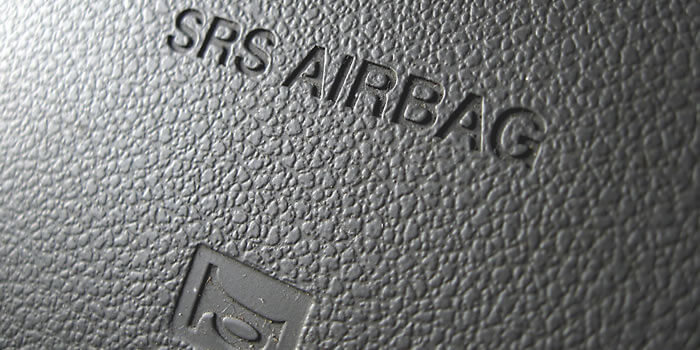
There is some concern recently about hidden cardiac and thoracic injuries that could occur from the deployment of a next generation airbag, especially in lower or moderate speed accidents. A study published recently by the Canadian Journal of Cardiology suggests a thorough cardiac examination be conducted on anyone that has experienced chest trauma associated with an airbag going off. There may not be any visible external injuries to indicate a cardiac or pulmonary problem, making it vital to discuss any symptoms you may be experiencing such as chest pain, tenderness or any difficulty breathing with your healthcare provider.
5. Shoulder Injuries
The shoulder actually refers to a region of joints, muscles, tendons, ligaments and cartilage and is a common MVA injury that is reported. The upper arm (humerus), shoulder blade (scapula), and collar bone (clavicle) are all susceptible to injury from any type of accident. As the shoulder moves in multiple directions, it is less stable than other joints. You may experience limited mobility, range of motion, and pain from tears, strains, dislocation or fracture.
Common Shoulder Injury Questions
What are the symptoms of a dislocated shoulder?
A forceful blow can partially or fully dislocate your shoulder and are usually indicated by; swelling or discolouration, visible shoulder deformity, inability to move the joint, numbness or tingling and pain. If you think you have a dislocated shoulder, do not try to pop it back into place yourself as this can cause additional damage. Proceed to the nearest emergency room or urgent care centre immediately.
Will a dislocated shoulder injury generally require surgery to repair?
A doctor will maneuver the shoulder back into the socket and prescribe pain medication. Once the shoulder has been relocated, you should notice immediate pain relief. Surgery may be required if you have severe damage or the shoulder doesn’t stay in place. You’ll likely require a sling to immobilize the area while it heals, followed by physical therapy to strengthen the area and prevent re-injury.
6. Internal Injuries
While many car accident injuries are on the outside of the body and easily detected, internal injuries can go unnoticed and lead to more serious conditions. Having a proper assessment by a healthcare practitioner after your accident is critical as injuries to organs such as the spleen, kidneys, liver, lungs, bowels, heart or aorta can be life-threatening. Fractured ribs can puncture the lungs and other organs and should also be treated immediately.
Common Internal Injury Questions
I was involved in a small fender bender, so should I worry about internal injuries?
Even if your accident seemed minor, it’s vital to obtain a thorough medical exam. Even slow-speed MVAs can cause serious trauma to your internal organs.
What are some symptoms I should look for if I have internal bleeding?
In a collision where there is severe injury such as internal bleeding, blood vessels may be damaged and unable to clot. Watch for symptoms such as fatigue, abdominal pain, thirst, lightheadedness or dizziness, pale complexion, overall cold feeling. You should relay any of these signs of internal bleeding to the first responders or medical professionals for further evaluation.
7. Brain, Head and Face Injuries
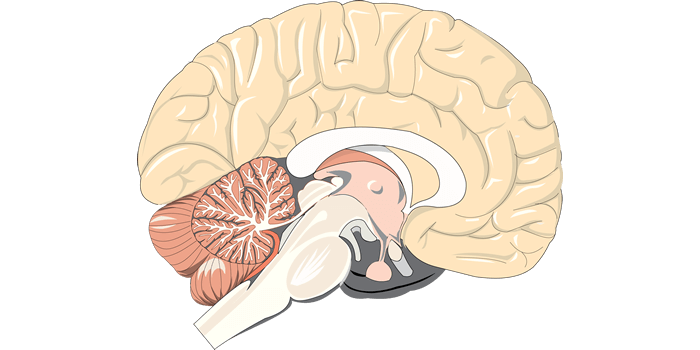
High-speed collisions can cause serious brain, head and facial injuries. Striking your head on the steering wheel, dashboard or windows can cause a traumatic brain injury. Problems can range from mild concussions to skull fractures to comas and long-term cognitive issues. In addition to cuts and bruises on the head and face, a dislocated or fractured jaw, broken nose, fractured eye socket, broken teeth or punctured ear drum can all require extensive treatment.
Common Brain, Head and Face Injury Questions
Can I have internal bleeding in my brain due to an accident if there is no visible damage?
Even if you have no cuts or bruises on your head, your brain may have moved inside your skull from the impact and caused bruising, bleeding and swelling of the brain. These conditions can lead to serious brain damage and must be treated immediately.
If I dislocate my jaw, will I need to have it wired shut to heal?
In most cases, a dislocated jaw can be manipulated back into the correct position with the use of a local anesthetic and muscle relaxants. Surgery may be required in some severe cases. Usually wiring is needed to immobilize a fractured jaw but may also be required during the healing process after re-alignment to keep you from opening your mouth too wide.
8. Broken Bones
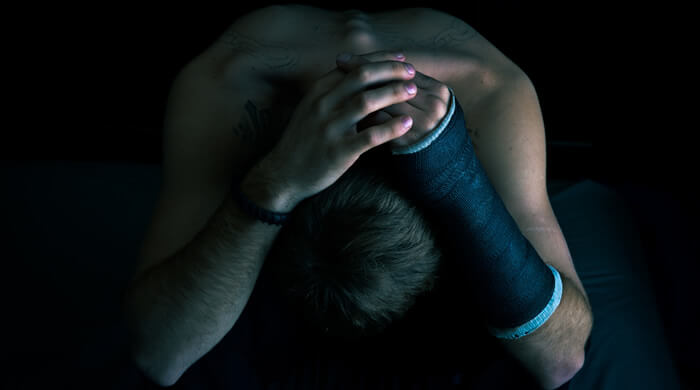
Suffering a side or front impact MVA can result in broken arms, legs, knees, ankles and hips. Passengers can hit the dash, seat or door and cause an open, closed, incomplete, complete, displaced or comminuted fracture. Open or compound fractures present when the broken bone pierces the skin and will require surgery within a few hours to prevent infection. Re-alignment, casting and physiotherapy will all be required to repair broken bones.
Common Broken Bone Injury Questions
What type of arm fractures typically occur?
There are three bones that can be affected: the humerus (elbow to shoulder), radius (elbow to wrist above thumb), and ulna (elbow to wrist above pinky finger.) Pain, limited movement, numbness, bruising and swelling are all symptoms that will require x-rays for diagnosis and treatment options.
What type of leg fractures typically occur?
Leg fractures can be very serious and affect any of three bones – femur (thighbone), tibia (shinbone), and fibula (small bone that runs parallel to the tibia.) As the femur and tibia bear weight as you walk, treatment may require months of non-weight bearing activity followed by physiotherapy and other forms of rehabilitation. Surgery may be required to insert pins, rods, plates or screws to hold the bones in place to heal properly.
9. Strains, Sprains, Bruising, Scrapes, and Cuts
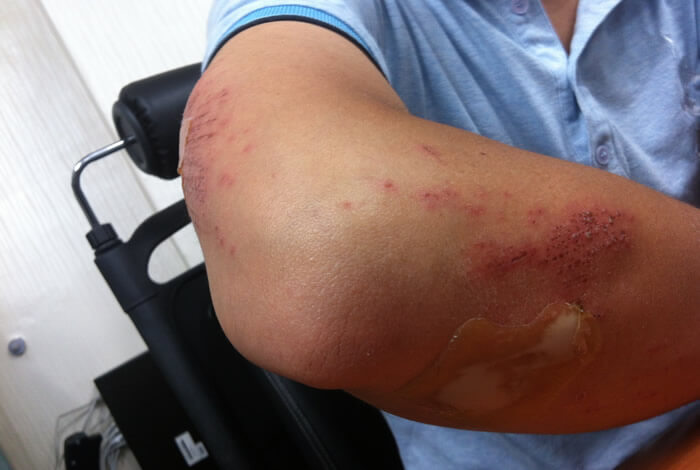
While these are probably the most common of all motor vehicle injuries and seem minor, residual pain and inflammation can cause discomfort for weeks after your accident. Symptoms include swelling, redness, pain with movement, weakness and the inability to use the muscle or joint. Injury can be caused from hitting the inside of the vehicle but also from projectiles thrown around the car and striking your body. You may require stitches and pain relievers for the first few days or weeks, followed by physiotherapy and massage therapy to restore full function.
10. Psychological Traumas
Emotional distress after serious MVAs is often reported when they involve severe injury or death. Both short- and long-term psychological injuries such as posttraumatic stress disorder, anxiety, depression and other emotional trauma can affect your ability to perform normal every day activities. Counseling and medications may be required to reduce the symptoms.
Motor Vehicle Safety in Canada
Canada has made a commitment to increasing awareness and improving road safety through a series of programs, details of which can be found here. Significant improvement in reducing the number of serious injuries and fatalities has been made over the last decade. If you are injured in a motor vehicle accident, call the experts at Main Street Health or book an assessment online for a complete evaluation. As a full-service clinic, our licensed therapists offer superior treatment, and our trained administrative staff can help you with all of your paper work. We are here for you to answer the important questions, such as:
- What do I do if I am in a car accident?
- What benefits may I be entitled to?
- When should I talk to a lawyer?
- Are there time limitations for me to make a claim and get treatment?



